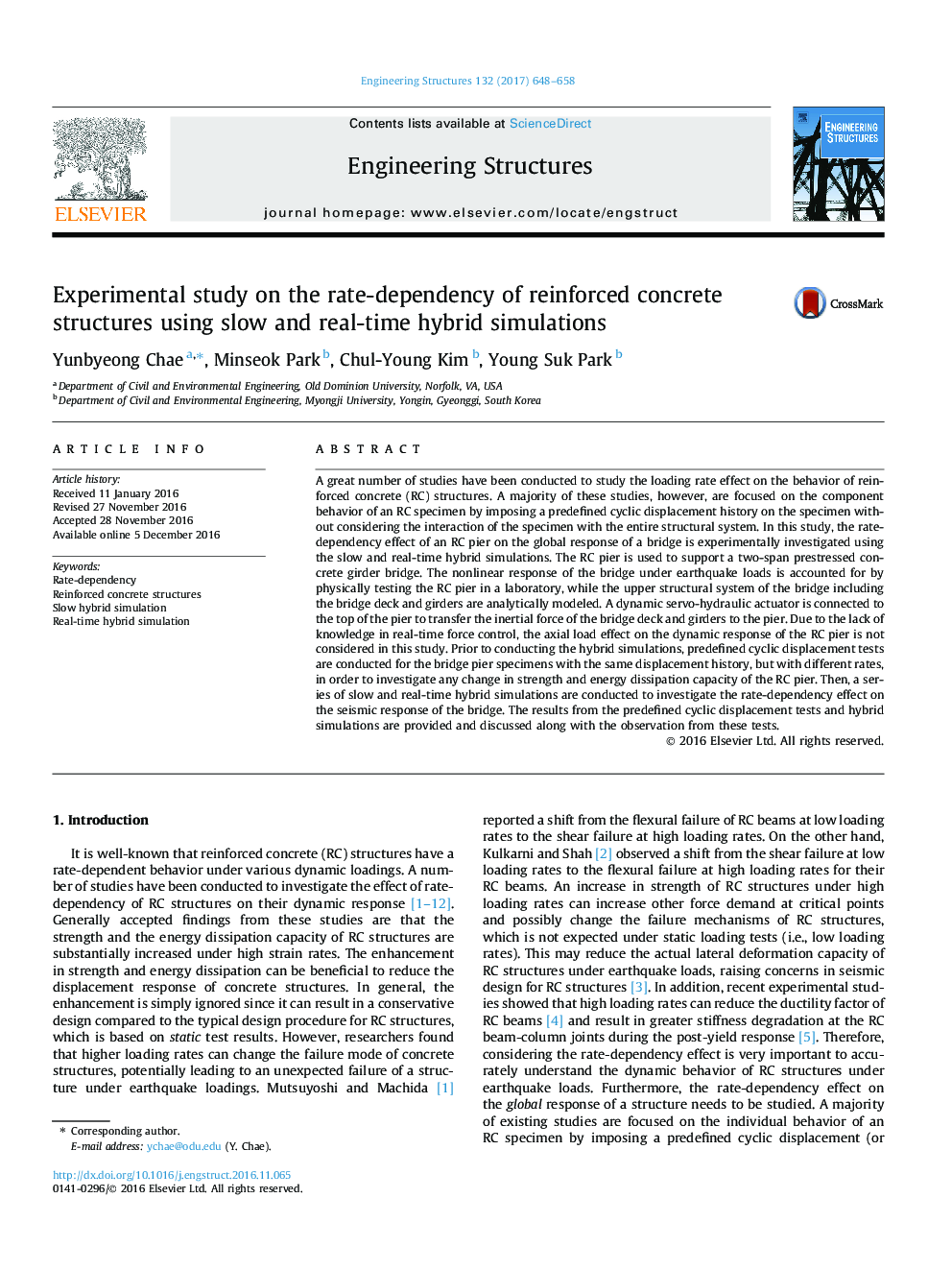| Article ID | Journal | Published Year | Pages | File Type |
|---|---|---|---|---|
| 4920463 | Engineering Structures | 2017 | 11 Pages |
Abstract
A great number of studies have been conducted to study the loading rate effect on the behavior of reinforced concrete (RC) structures. A majority of these studies, however, are focused on the component behavior of an RC specimen by imposing a predefined cyclic displacement history on the specimen without considering the interaction of the specimen with the entire structural system. In this study, the rate-dependency effect of an RC pier on the global response of a bridge is experimentally investigated using the slow and real-time hybrid simulations. The RC pier is used to support a two-span prestressed concrete girder bridge. The nonlinear response of the bridge under earthquake loads is accounted for by physically testing the RC pier in a laboratory, while the upper structural system of the bridge including the bridge deck and girders are analytically modeled. A dynamic servo-hydraulic actuator is connected to the top of the pier to transfer the inertial force of the bridge deck and girders to the pier. Due to the lack of knowledge in real-time force control, the axial load effect on the dynamic response of the RC pier is not considered in this study. Prior to conducting the hybrid simulations, predefined cyclic displacement tests are conducted for the bridge pier specimens with the same displacement history, but with different rates, in order to investigate any change in strength and energy dissipation capacity of the RC pier. Then, a series of slow and real-time hybrid simulations are conducted to investigate the rate-dependency effect on the seismic response of the bridge. The results from the predefined cyclic displacement tests and hybrid simulations are provided and discussed along with the observation from these tests.
Related Topics
Physical Sciences and Engineering
Earth and Planetary Sciences
Geotechnical Engineering and Engineering Geology
Authors
Yunbyeong Chae, Minseok Park, Chul-Young Kim, Young Suk Park,
